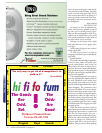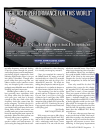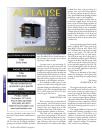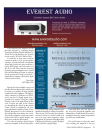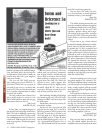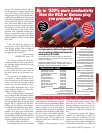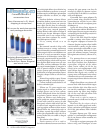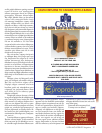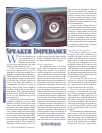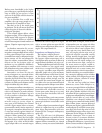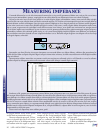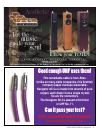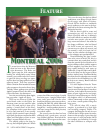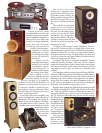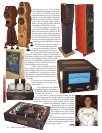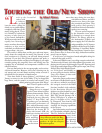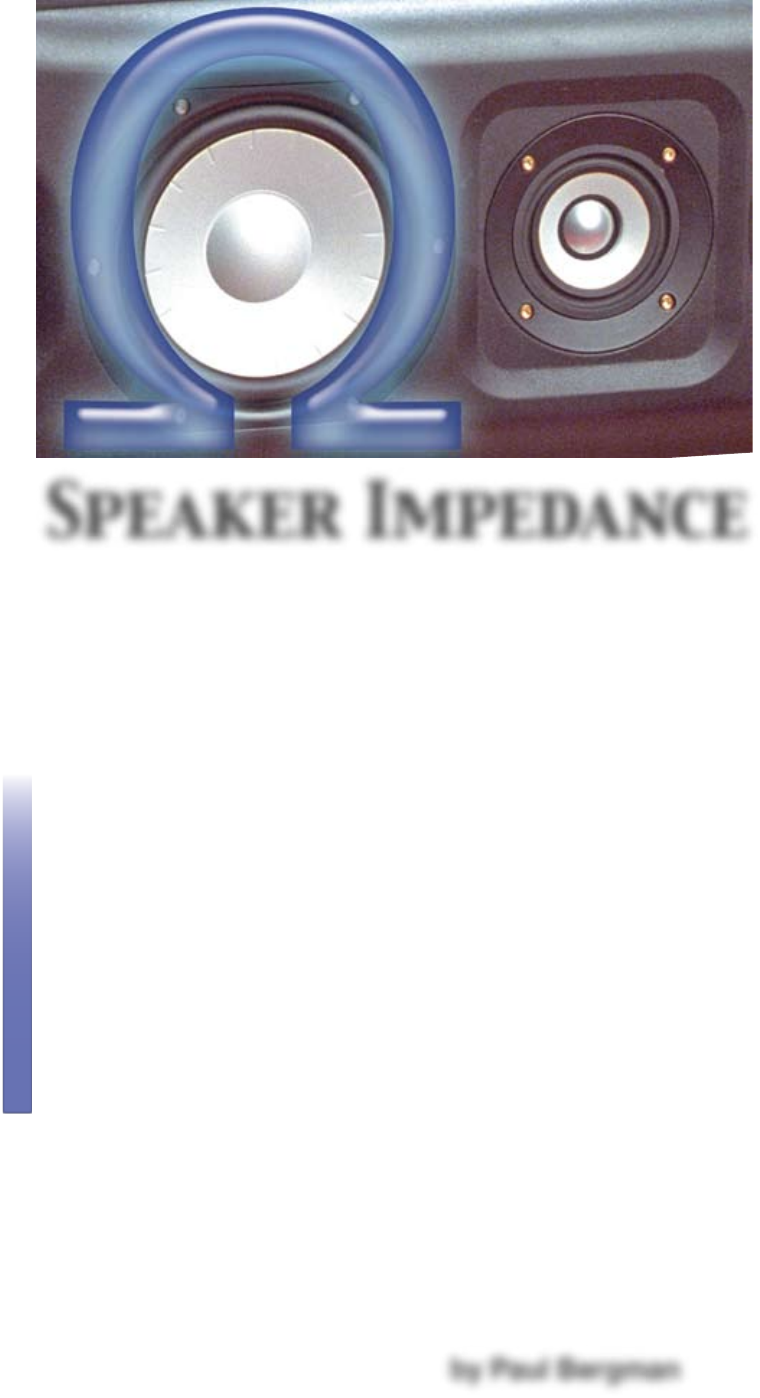
Feedback
Nu ts&Bolts
W
hat is the impedance of
your loudspeakers? Is
it 8 ohms? Or 4 ohms?
Perhaps you know that
it is not just a single number, but what
difference does it make anyway?
At the very least you are no doubt
aware that a speaker with a very low
impedance can present a problem for an
amplifier, and potentially can damage it.
Think about the fact that short-circuit-
ing an amplifier output can either break
it, or blow a fuse, or trigger a protection
circuit. The lower the impedance of
a loudspeaker, the closer it comes to
being a short circuit. Some amplifiers
can drive a load of 2 Ω or even 1 Ω, but
most will not. (The Greek letter Omega
is of course the symbol for resistance).
In any case, low impedance may not be
your only worry.
With this issue, UHF intends to begin
publishing impedance curves for loud-
speakers reviewed, and for that reason
I have been asked to explain speaker
impedance, and also to suggest a simple
manner of measuring a speaker's imped-
ance. “Simple” in this case means using a
minimum of specially-purchased equip-
ment, though in day-to-day operation it
is less simple than using a purpose-built
instrument that can spit out a complete
impedance graph in a few seconds. Yes,
impedance measurements result in a
graph, not just the single figure usually
found in loudspeaker literature, but let
me begin with some basic concepts.
What is impedance?
If a loudspeaker were to be driven
by DC (direct current) we could speak
simply of its resistance. The speaker’s
internal wiring has a certain (low) resis-
tance, as does the fine wire that makes up
each driver’s voice coil. However loud-
speakers are intended to be driven by AC
(alternating current), whose frequency of
alternation is that of the sound we are
attempting to reproduce. Thus we need
to take into account the speaker’s induc-
tance and capacitance. The voice coil is an
inductor, and the internal wiring may be
as well. Inductance can be thought of as
a resistance that is frequency-dependent,
with its ohm value rising as frequency
drops. Most crossover networks include
capacitors, which introduce capacitance.
A capacitor can also be thought of as a
frequency-dependent resistor, whose
ohm value rises with frequency. Since a
capacitor’s impedance characteristic is
exactly opposite to that of an inductor, it
is easy to see how capacitors and induc-
tors can be combined to make filters.
I shall add, without great elabora-
tion, that these are not the only factors
determining the impedance reflected
back to the amplifier. For example, as
a woofer cone moves back and forth,
acting as a linear motor, it also acts as a
generator, actually generating a voltage
that is opposite to that coming from the
amplifier. That this complicates things
is an understatement.
It must also be evident that, in a
speaker that combines resistance, induc-
tance and resistance, the total impedance
cannot be a single number, since it will
inevitably vary with frequency. This is
not typically taken into consideration by
designers of amplifiers, who test their
designs by loading them with an 8 ohm
resistor, possessing neither capacitance
nor inductance, and having a constant
impedance at all frequencies.
The ideal, and the practical
The closer a speaker is to a pure
resistance, the more confidence an
amplifier designer can have that his
product will behave in the customer’s
home exactly as it did on the test bench.
That said, few loudspeakers are very
much like resistors at all, and so in fact
amplifiers must be designed to operate
with impedances that are vastly different
from that ideal resistor. What is more,
the designer cannot know in advance the
characteristics of the speakers that will
be used with his product.
To see what he (and we) are up
against, let us look at the impedance
curve of a small two-way speaker, which
has a famous name I do not propose to
reveal. It is shown on the next page.
The curve has been drawn by a
technique I shall describe presently
(see Measuring Impedance on page 20).
Most speakers, I might add by way of
explanation, have a considerable peak in
impedance at the point of resonance of
the woofer and cabinet. The one I have
arbitrarily selected has only a small rise,
centred around 100 Hz, which would
be the practical lower limit of its bass
response.
The manufacturer’s nominal imped-
ance rating is 4 Ω, but you need only
glance at the curve to see that it deviates
from that rating quite considerably. It
dips to about 3 Ω at 16 Hz, which should
present little problem for an amplifier
designed the least bit competently.
Speaker Impedance
by Paul Bergman
18 ULTRA HIGH FIDELITY Magazine



